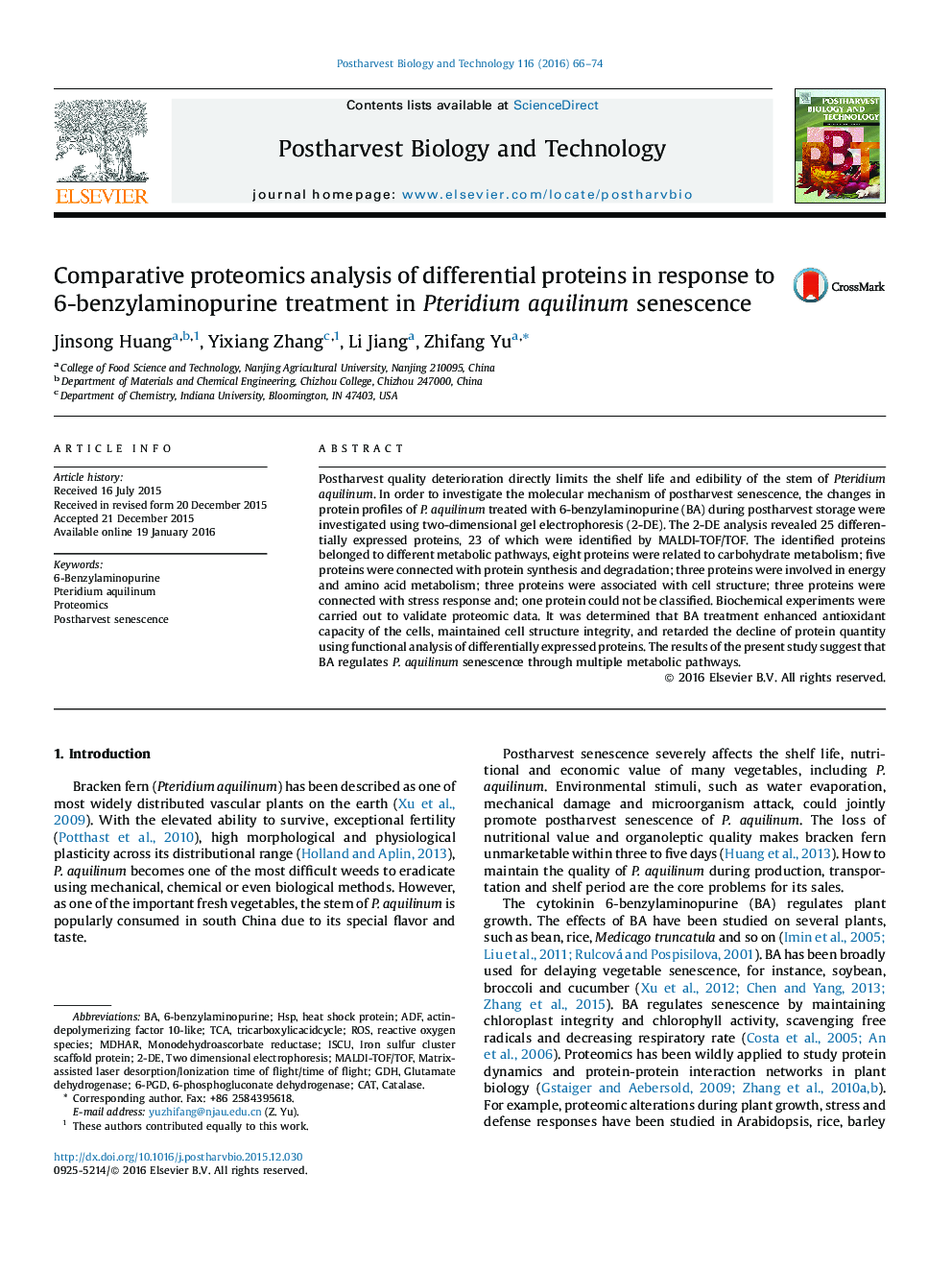| Article ID | Journal | Published Year | Pages | File Type |
|---|---|---|---|---|
| 4517818 | Postharvest Biology and Technology | 2016 | 9 Pages |
•Mechanism of quality control on Pteridium aquilinum by BA treatment is proposed.•P. aquilinum senescence is the results of multiple regulated pathways.•Proteomic results reveal pathways regulated by BA during P. aquilinum senescence.
Postharvest quality deterioration directly limits the shelf life and edibility of the stem of Pteridium aquilinum. In order to investigate the molecular mechanism of postharvest senescence, the changes in protein profiles of P. aquilinum treated with 6-benzylaminopurine (BA) during postharvest storage were investigated using two-dimensional gel electrophoresis (2-DE). The 2-DE analysis revealed 25 differentially expressed proteins, 23 of which were identified by MALDI-TOF/TOF. The identified proteins belonged to different metabolic pathways, eight proteins were related to carbohydrate metabolism; five proteins were connected with protein synthesis and degradation; three proteins were involved in energy and amino acid metabolism; three proteins were associated with cell structure; three proteins were connected with stress response and; one protein could not be classified. Biochemical experiments were carried out to validate proteomic data. It was determined that BA treatment enhanced antioxidant capacity of the cells, maintained cell structure integrity, and retarded the decline of protein quantity using functional analysis of differentially expressed proteins. The results of the present study suggest that BA regulates P. aquilinum senescence through multiple metabolic pathways.
